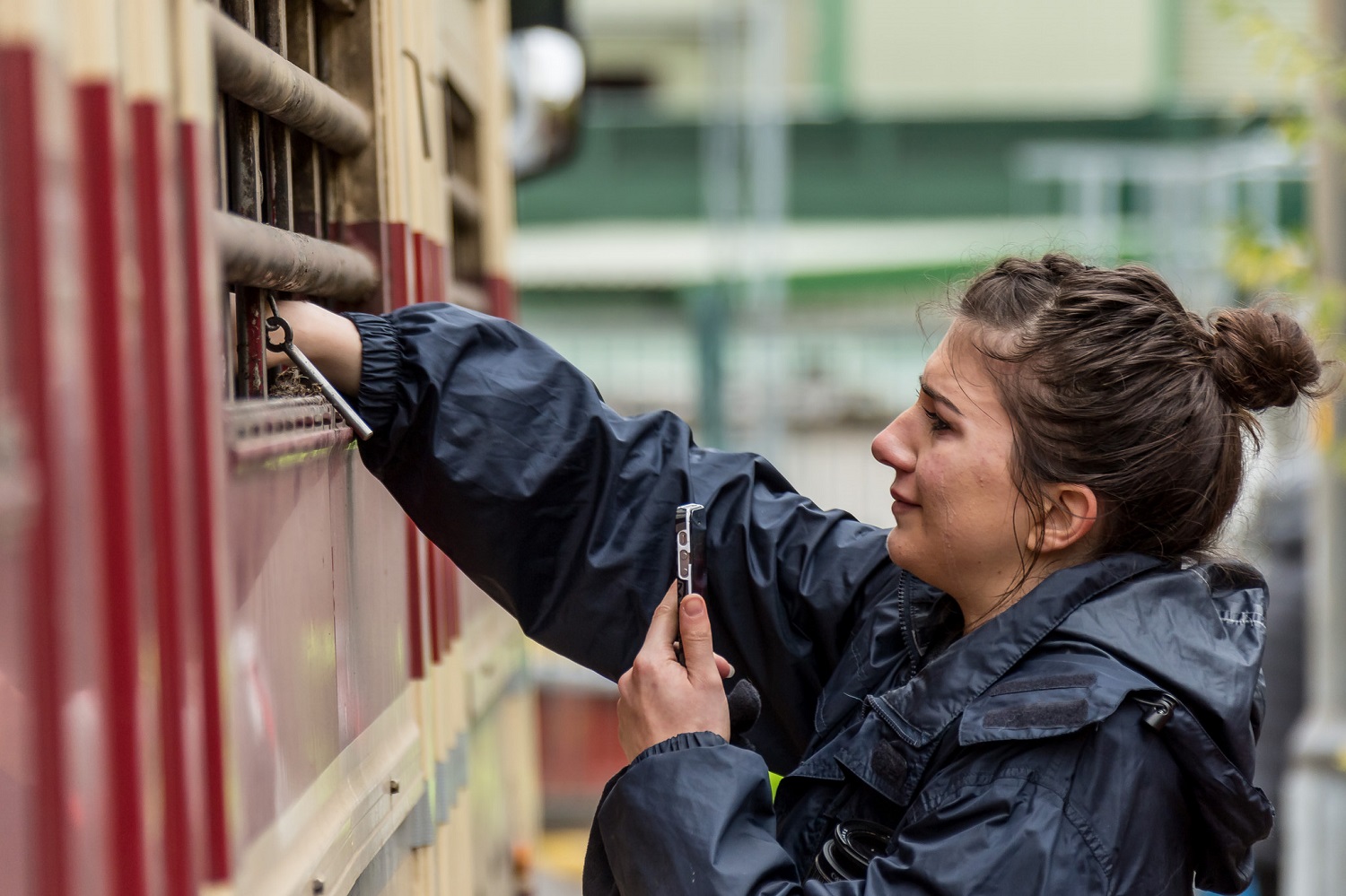At a giant pet store in west-end Toronto last week, people loaded up on gifts and stocking stuffers for their pets, and posed with them for a “family Christmas photo.”
This cheerful scene only highlighted the odd disconnect between the way we embrace our pets as family while allowing animals that are similarly sweet and endearing to live miserable lives on factory farms — and to endure horrific deaths (more on that in a minute).
Indeed, only a stone’s throw from that west-end Petsmart — where you can buy a cute pair of fuzzy antlers for your dog — are two slaughterhouses where a daily stream of trucks arrive carrying cows, calves and sheep.
We’ve all seen such trucks on the highway, probably caught a glimpse of animal snouts and eyes through the narrow slats. But no one driving on the highway seems alarmed, making it easy to conclude everything is fine, that the animals aren’t suffering and that their deaths will be swift and painless.
I’ve recently come to believe that none of these comforting thoughts is true.
At the root of our numbness to animal suffering is the notion — unwittingly accepted by lifelong meat-eaters like myself — that animals don’t feel emotions like we do.
But Joseph Stookey, a veterinary professor at the University of Saskatchewan, maintains that a cow’s love for her offspring pretty much resembles that of a human mother: “I can’t see any difference,” he notes.
In recent years, scientists have come to see remarkable similarities between animal and human behaviour. “Farm animals feel pleasure and sadness, excitement and resentment, depression, fear and pain,” writes the renowned ethologist Jane Goodall. “They are far more aware and intelligent than we ever imagined.”
This shines a very different light on what animals are experiencing in the back of those transport trucks.
A group of activists calling themselves “Toronto Cow Save” gathers every week for a vigil in front of those two west-end slaughterhouses to comfort the animals and to “bear witness” to their suffering.
The group is an offshoot of Toronto Pig Save, which captured widespread attention after activist Anita Krajnc was charged for providing water to thirsty pigs being transported on a hot June day in 2015. Her case — and eventual acquittal — prompted a wave of public support, spawning the creation of like-minded groups, now numbering more 200 across North America and as far away as Brazil and Hong Kong.
Last week, to get a look for myself, I took part in a Toronto Cow Save vigil.
As each truck slowed to enter the loading dock, we could briefly reach through the slats and pat the animals, who were skittish and trembling; some were stomping. One cow eagerly licked an activist’s hand.
What happens next has been captured in a powerful video filmed last summer by Toronto activist Len Goldberg through an open window at the back of the Ryding-Regency slaughterhouse.
One expects the scenes to be unpleasant. This is a slaughterhouse, not a petting zoo. Still, the video is shocking and difficult to watch.
Previously unreleased, the video clearly shows a large brown cow thrashing about on the floor, trying to get up, as blood gushes out of a gaping wound on her neck. A black-and-white cow similarly struggles on the floor, while a worker bends over and cuts her throat. Cows hoisted upside down, dangling from one leg, appear to be still moving while workers tear off their skin with knives. Blood is everywhere.
Armaiti May, a California-based veterinarian who watched the video, commented: “I was horrified to see fully conscious, alert cows writhing and flailing in agony as the blood drained from their slit throats.”
The suffering visible in the video makes an eloquent case for not eating meat. Then there’s the fact that the livestock industry — processing billions of animals globally each year — generates massive greenhouse gas emissions, contributing to global warming.
But meat-eating is deeply embedded in our culture and the multi-billion-dollar cattle and dairy industries are powerful and politically connected, making change difficult.
At the very least, however, our systematic, largely invisible mistreatment of animals deserves much more scrutiny in the media and in Parliament than it currently gets.
After the vigil, I wander back to Petsmart, trying to return to the spirit of Christmas. I buy a nice warm coat for my dog, and struggle to put out of my mind the sweet face of a calf I petted, minutes before the truck delivered her for slaughter.
Linda McQuaig is a journalist and author. Her book Shooting the Hippo: Death by Deficit and Other Canadian Mythswas among the books selected by the Literary Review of Canada as the “25 most influential Canadian books of the past 25 years.” A version of this column originally appeared in the Toronto Star.
Photo: Vladimir Morozov/flickr




